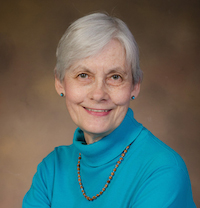Universities listed were at the time of graduation from the JLID program.
JLID Fellows 2008-09 [Final class of the JLID program.]
- Brigitta Brunner, Auburn University
- Heidi Hatfield Edwards, Florida Institute of Technology
- Marie Hardin, Penn State University
- Karen Kline, Lock Haven University
- Teresa Lamsam, University of Nebraska Omaha
- Loren Mulraine, Middle Tennessee State University
- Greg Pitts, Bradley University
- William Sutton, Achieving the Dream
- Frances Ward-Johnson, Elon University
JLID Fellows 2007-08
- Kathy Bradshaw, Bowling Green State University
- Carolyn Byerly, Howard University
- Anita Fleming-Rife, Grambling State University
- Jon Funabiki, San Francisco State University
- Sherlynn Howard-Byrd, Alcorn State University
- Kimberly Lauffer, Towson University
- Julianne Newton, University of Oregon
- Humphrey Regis, North Carolina A&T University
- Felecia Jones Ross, Ohio State University
JLID Fellows 2006-07
- Louise Benjamin, Associate Professor, University of Georgia
- Linda Callahan, Professor North Carolina A&T State University
- Rochelle Ford, Associate Professor, Howard University
- Louisa Ha, Associate Professor, Bowling Green State University
- Suzanne Huffman, Professor, Texas Christian University
- Mary Jean Land, Professor, Georgia College & State University
- Amy Reynolds, Associate Professor, Indiana University
- Sharon Stringer, Associate Professor, Lock Haven University of Pennsylvania
- Barbara Zang, Associate Professor, Worcester State College
JLID Fellows 2005-06
- Professor Hub Brown, Associate Professor, Syracuse University
- Dr. Lillie Fears, Associate Professor, Arkansas State University
- Dr. Mary-Lou Galician, Associate Professor, Arizona State University
- Dr. Robyn Goodman, Associate Professor, Alfred University
- Dr. Derina Holtzhausen, Professor, University of South Florida
- Dr. Sundeep Muppidi, Associate Professor, University of Hartford
- Dr. Zeny Sarabia-Panol, Professor, Middle Tennessee State University
- Dr. James Tsao, Associate Professor, University of Wisconsin-Oshkosh
JLID Fellows 2004-05
- Dr. Debashis “Deb” Aikat, Associate Professor, University of North Carolina at Chapel Hill
- Dr. Elizabeth V. Burt, Associate Professor, University of Hartford
- Dr. Dwight E. Brooks, Associate Professor, University of Georgia
- Dr. Jinx C. Broussard, Associate Professor, Dillard University, Associate Professor, Louisiana State Univ.
- Dr. Kris Bunton, Professor, University of St. Thomas
- Dr. Caryl Cooper, Assistant Dean of Undergraduate Studies, Associate Professor, University of Alabama
- Dr. Judith “Judy” Cramer, Associate Professor, St. John’s University
- Dr. Jennifer Greer, Associate Professor, University of Nevada-Reno
- Dr. Linda Jones, Director, School of Communication, Associate Professor, Roosevelt University
- Dr. Therese “Terry” L. Lueck, Professor, The University of Akron
- Dr. Virginia “Ginny” Whitehouse, Associate Professor, Whitworth College
JLID Fellows 2003-04
- Dr. Eddith Dashiell, Ohio University, Associate Professor, Scripps School of Journalism, Associate Dean, College of Communication, Ohio University
- Dr. Barbara DeSanto, University of North Carolina at Charlotte, Associate Professor, Graduate Program Coordinator, Department of Communication Studies
- Dr. Nancy Mitchell, University of Nebraska-Lincoln, Associate Professor, Department Chair, College of Journalism and Mass Communications
- Dr. Jan Quarles, Middle Tennessee State University, Professor, Assistant Dean, College of Mass Communication
- Dr. Sandra Utt, University of Memphis, Associate Professor, Assistant Chair, Journalism Department
- Dr. Liz Watts, Texas Tech University, Associate Professor, Associate Director, School of Mass Communication
- Dr. Maria Williams-Hawkins, Ball State University, Associate Professor, Department of Telecommunication, College of Communication, Information and Media
JLID Fellows 2002-03
- Dr. Janet Bridges, University of Louisiana at Lafayette, Associate Professor, Department of Communication
- Dr. Kathleen Endres, University of Akron, Professor, School of Communication
- Dr. John Omachonu, William Paterson University, Associate Professor, Chair, Department of Communication
- Dr. Federico Subervi, Pace University, Professor, Chair, Department of Communication Studies
- Dr. Birgit Wassmuth, Drake University, Professor, School of Journalism and Mass Communication
- Dr. Jan Whitt, University of Colorado at Boulder, Associate Professor, School of Journalism and Mass Communication
- Dr. Lynn Zoch, University of South Carolina, Associate Professor, College of Journalism and Mass Communications
JLID Fellows 2000-02 [Inaugural class began as a two-year fellowship.]
- Prof. Sandra Birdiette, Wayne State University
- Dr. Kenneth Campbell, University of South Carolina
- Dr. Shannon Campbell, University of Kansas
- Dr. Meta Carstarphen, University of Oklahoma
- Dr. Qingwin Dong, University of the Pacific
- Dr. Martin Edu, Grambling State University
- Dr. Kathleen Fearn-Banks, University of Washington
- Dr. Camilla Gant, State University of West Georgia
- Dr. Cathy Jackson, Norfolk State University
- Dr. Phil Jeter, Florida A&M University
- Dr. Carmen Manning-Miller, University of Mississippi
- Dr. Diana Rios, University of Connecticut
- Dr. John Sanchez, Penn State University
- Dr. Jeanne Scafella, Murray State University
- Dr. Linda Steiner, Rutgers University
- Dr. Karen Turner, Temple University

